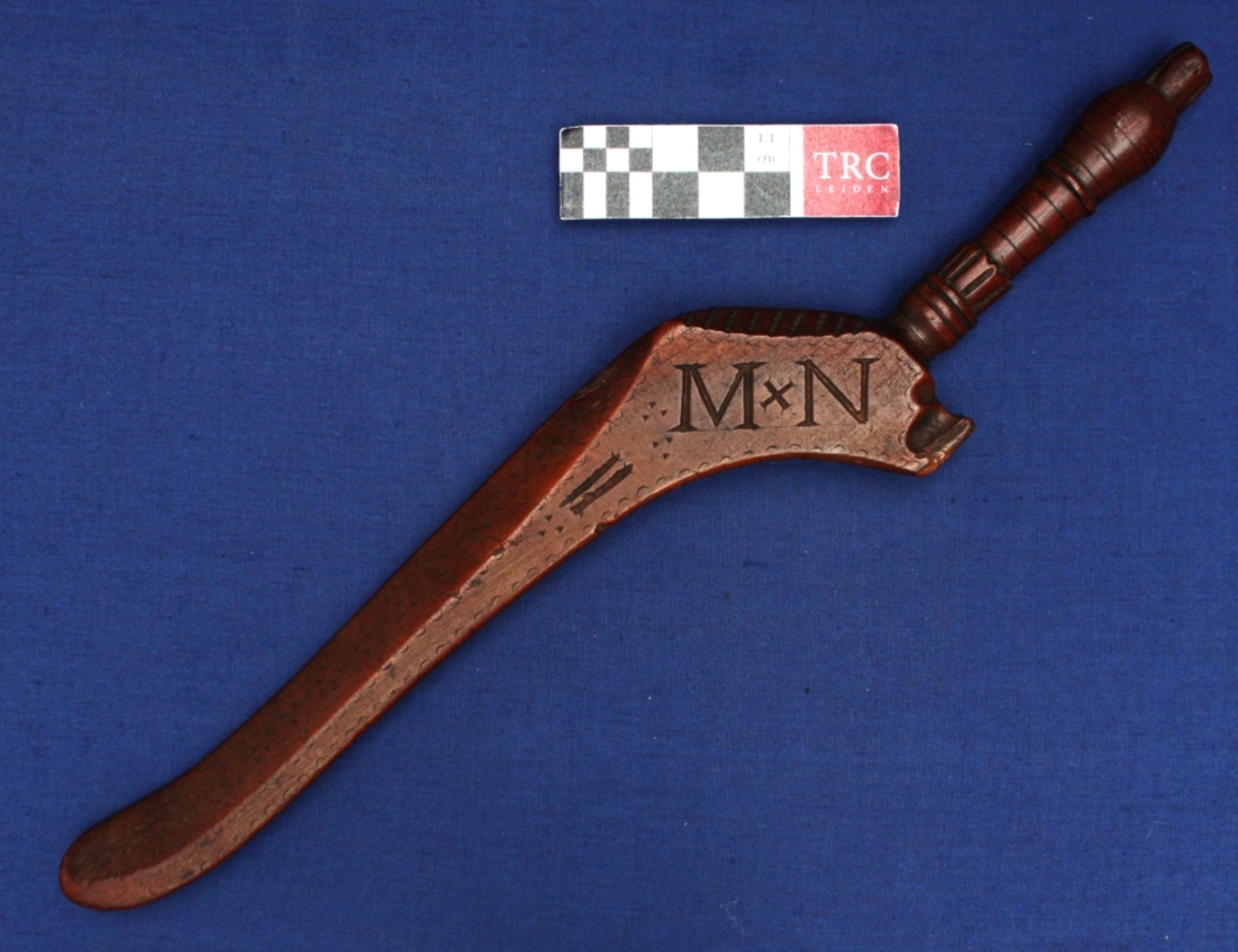
Hand knitting, especially of stockings and socks, and later caps, gloves and jumpers, was an important cottage industry in many parts of Europe from the 16th to the beginning of the 20th century. Many women (and some men) knitted clothing for themselves and their family, but they could also supplement their incomes by making knitted goods for sale.
Over the centuries, in order to make the hand knitting quicker, various tools were developed including knitting sheaths, which meant the knitter could continue plain knitting while carrying out other domestic jobs, such as looking after babies, or while walking to the market or work, carrying baskets on their heads or backs, etc.
Most of the surviving knitting sheaths date from the 18th and 19th century, but there are older examples, such as one in the Victoria &Albert Museum (V&A 774-1907) that has the date 1679 carved into it.



But what exactly are knitting sheaths and how were they used? There are two basic forms, a stick and a sheath, but there is no consistency in the literature about distinguishing between these two types. Both of them are sometimes either called a stick or a sheath. Nowadays, most people use the term sheath for both forms.

Both forms have one or more holes at one end into which a curved or straight needle could be fixed. The hole was sometimes reinforced with leather, paper or metal strips to help reduce wear, while on other occasions there were reeds place in the holder section (see TRC 2023.2353) to keep the needle in place.
Sheaths can be made out of a variety of different materials such as amber, bone, cloth, ivory, leather, metal, porcelain, straw or wood, and may also be decorated with items such beads, feathers or chains and hooks.

Most of the ‘new’ knitting sheaths in the TRC Collection, for example, are made from wood (such as TRC 2023.2357 and TRC 2023.2361), but there are also three leather examples (TRC 2023.2352, TRC 2023.2353, and TRC 2023.2354), one made of wood covered with shagreen (TRC 2023.2356) and one that is simply a piece of bone (TRC 2023.2355).

Many of the sheaths in the TRC and other collections represent different decorative shapes and techniques and were made as love tokens by young men to a girl-friend or fiancee and were decorated with carved initials (TRC 2015.0256), love tokens such as hearts (TRC 2023.2365), quotes from poetry or the Bible, etc. Knitting sticks were often decorated with turned lines and forms.
Function
Sheaths were tucked into a belt or the waistband of a skirt or pair of trousers. The purpose of these tools was to support a knitting needle while working plain knit. The sheath also took the weight off the work and prevented the stitches from slipping off the bottom of a double-ended needle.
Basically, the use of this tool gave the knitter greater control over the yarn and its tension and made the production of a hand knitted item much quicker. The shaft had one or more holes to take one or more knitting needles.
Knitting could be done either forwards and backwards on a single row with a change of needles (using a sheath with a large hole for the needle shaft), as well as in the round with four or five needles, one of which was fixed into the knitting sheath. The use of a sheath also meant that one hand was free to do other work, such as looking after a baby or children. All in all a small tool with many functions.
Gillian Vogelsang-Eastwood, 29 November 2023










